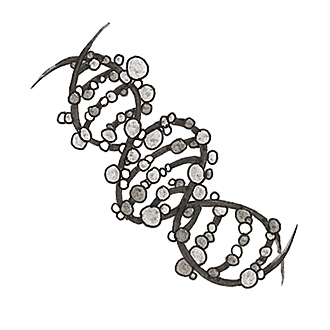
Related Questions
- Can hearts, livers, and kidneys be grown in the lab for human transplants?
- Is sleep necessary?
- Is it possible to control someone’s thoughts?
- How are thoughts measured?
- Must all organisms age and die?
- How do medicines know where in the body to start working?
- Do humans emit radiation?
- Why do our bodies make boogers?
- Why do I have to take some medications every four hours but others only once a day?
- Could I put a computer chip in my brain to make me smarter?
How do doctors detect cancer in the human body?
How they do it now and how they will do it in the future may end up being very different…
By Elizabeth DoughertyCancer cells, like viruses and bacteria, are moving targets. Within a tumor’s “cellular mishmash,” cancer cells mutate and become resistant to treatment that at first seemed to be working, says Michael Cima, MIT professor of materials science and engineering and a member of MIT’s David H. Koch Institute for Integrative Cancer Research. “Cancer evolves in a way that is ahead of the therapy.”
As a result, doctors are increasingly focusing on managing cancer rather than curing it. The current methods for detecting cancer vary from the relatively crude (such as a lump in a woman’s breast, or visible changes and irregularities in the skin), to more sophisticated (such as the prostate-specific antigen blood test). To effectively manage the disease, doctors need new ways to measure how well a treatment is working. “Many people are working on diagnostics,” said Cima, who is developing an implantable sensor that can detect biological markers — proteins or other secreted factors associated with specific types of cancer — that can give doctors insights into how to choose the best therapeutic route for a patient. “But there aren’t many clinically validated markers yet,” said Cima. “So we decided to take a step back.”
After talking to clinicians, Cima learned that the chemicals a tumor secretes as it burns energy and grows are not only relevant indicators of general tumor growth, they are also detectable within the tumor themselves. So he and his team designed a sensor that consists of a cluster of magnetic nanoparticles encased in a semi-permeable membrane. He coats the nanoparticles with antibodies that grab onto the chemicals as they float by.
During a conventional biopsy, the tiny sensor is implanted inside a tumor, where it will be bathed in chemicals secreted by the tumor cells. The targeted metabolic chemicals will accumulate inside the sensor if the tumor is actively growing. The surgeon can then read the chemical measures using an MRI or a radio. “It works like a bell. We hit it and measure the time it takes for the sound to die away. That time changes depending on whether these chemicals have aggregated inside the sensor or not,” says Cima.
If all goes well, the sensor will eventually provide doctors with richer, more detailed information about how aggressively to treat a tumor and how well that treatment is progressing. “For now, all clinicians have to go on is tumor size,” says Cima.
The sensor is extensible by design; as new markers become validated, Cima’s team can add antibodies that grab onto them. More immediately, however, the team’s next steps involve testing the device in large animals being treated for cancer in local veterinary centers.
To design this sensor, Cima and his team are bringing to the table three key traits: curiosity, empathy, and leadership. These qualities, says Cima, who is also director of the Lemelson-MIT program, are crucial in all great innovators. “None of these traits have to do with when you took algebra,” he said. “They are elements of character.”
Posted: December 1, 2009